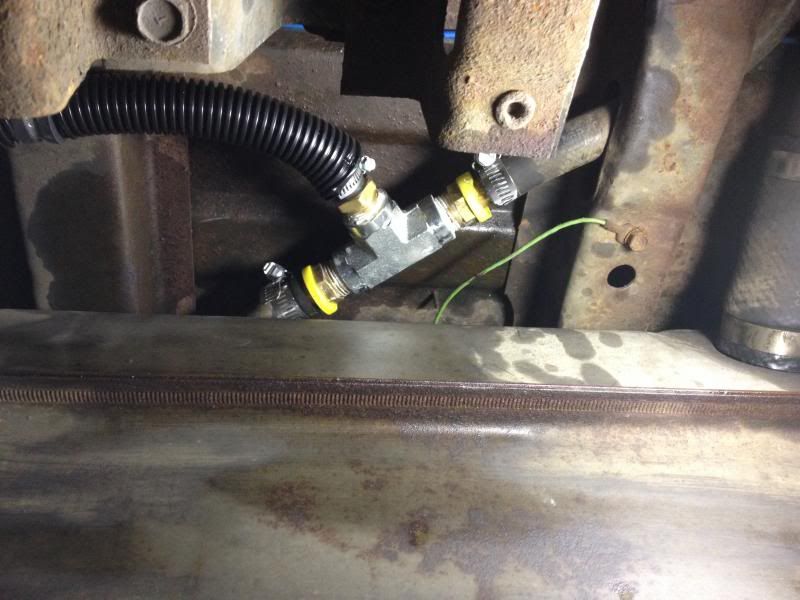Yachtcare
Recruit
- Messages
- 173
- Reaction score
- 2
I'm getting ready to install a FASS fpr 1001 pressure regulator, between the stock FFM and the DB2 IP I have recently installed, to get the pressure from the Cummins lift pump back down to a sustainable 9psi. Don't know what it pushes now, but is rated at around 14-17psi IIRC.
The FASS includes a bypass for excess fuel to be returned "to the tank", and the instructions specifically mention that plumbing it back to the vehicles stock return line is not recommended. Said return line is a 1/2" NPT opening at the bottom. So I plan to put a 3/8" barbed fitting in there. Then the question remains where to plumb the return fuel too.
I'm assuming that this fuel would need to be returned in a manner as the stock setup is, in a closed loop, so air cannot be introduced to the system.
I have a 10 micron Racor fuel/water separator mounted on the frame between tank and lift pump. I have installed shut off valves on both sides of the Racor housing to make element changes simpler, without much bleeding necessary. My thought is to take the return fuel from the FASS, and plumb it to a tee on the intake side of the Racor. This should draw the return fuel through the Racor, and just send it harmlessly back through the filters again. At least that's what I think.
Anyone see any flaws in my logic?
For overkill, I've toyed with the idea of a 2 micron element on another Racor mounted in the FASS return line.
The FASS includes a bypass for excess fuel to be returned "to the tank", and the instructions specifically mention that plumbing it back to the vehicles stock return line is not recommended. Said return line is a 1/2" NPT opening at the bottom. So I plan to put a 3/8" barbed fitting in there. Then the question remains where to plumb the return fuel too.
I'm assuming that this fuel would need to be returned in a manner as the stock setup is, in a closed loop, so air cannot be introduced to the system.
I have a 10 micron Racor fuel/water separator mounted on the frame between tank and lift pump. I have installed shut off valves on both sides of the Racor housing to make element changes simpler, without much bleeding necessary. My thought is to take the return fuel from the FASS, and plumb it to a tee on the intake side of the Racor. This should draw the return fuel through the Racor, and just send it harmlessly back through the filters again. At least that's what I think.
Anyone see any flaws in my logic?
For overkill, I've toyed with the idea of a 2 micron element on another Racor mounted in the FASS return line.

